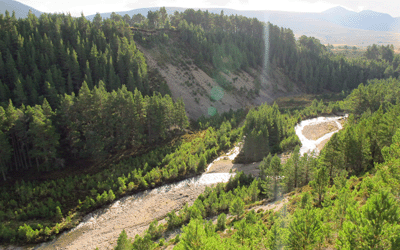Rewilding teams are facing a huge task to encourage the return of wildlife after decades of damage by the forestry industry
Chopping down trees is not how most people would expect a river restoration project to begin, but Janne Raassina – who is expertly using a chainsaw to take down four or five earmarked trunks around the Särkkäjoki River in remotest eastern Finland – explains that the rotting wood will be hugely useful to the ecosystem.
“This is a huge buffet for insects, and it’s something that has been missing in our nature for 100 years,” he says. “We are creating the food chain from scratch.”
Finland is the most heavily forested country in Europe, with about 76% of its land area cloaked by trees. However, this impressive statistic disguises the ecological damage that has been inflicted by the forestry industry over the last century or so.
The old growth has almost entirely vanished, replaced by the skeletal monocultures of commercial plantations; today, less than 5% of Finland’s forest cover is more than 120 years old. These are a pale imitation of the lichen-laden, berry-filled forests of old – and the wildlife has suffered as a result.

